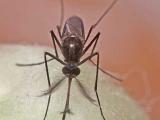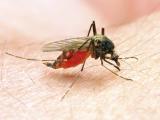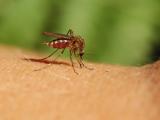Aug 22, 2012 (CIDRAP News) – The United States is experiencing a dramatic rise in the cases of West Nile virus (WNV) infections over the past month, with record-setting numbers expected over the next several weeks and the US Centers for Disease Control and Prevention (CDC) warning people to take key preventive steps.
So far, 38 states have reported human cases, but the epicenter is Texas, which has reported half of the WNV infections. The CDC said so far it has received reports of 1,118 cases, including 629 people with the neuroinvasive form of the disease. Nationally, 41 deaths have been reported.
The CDC said five states have reported three quarters of all cases: Texas, Mississippi, Louisiana, South Dakota, and Oklahoma.
At a media briefing today, Lyle Petersen, MD, MPH, who directs the CDC's Division of Vector-Borne Infectious Diseases, said WNV activity is hard to predict and is driven by complex interactions between birds, mosquito populations, and human behaviors. He told reporters that an unusually mild spring could have fostered conditions that led to the rise in WNV activity and that hot weather, reported by much of the nation this summer, seems to increase transmission of the virus, a pattern that has been seen in the past in parts of Europe and Africa.
Officials still don't know why the Dallas County area, specifically, has been hit so hard with WNV infections. "Sometimes it's a very focal disease," Petersen said.
Southern states typically see an earlier rise in WNV activity because spring starts earlier there, Petersen stated, adding that the disease typically peaks in the middle of August and that the CDC expects many more cases to be reported through the end of September.
The CDC is working with states and local health departments to track and battle WNV, including sending two teams to help Texas health officials. He said 242 viremic blood donors have been identified from 26 states, so screening is playing an important role in protecting the nation's blood supply.
Petersen urged individuals to take steps to prevent getting sick, such as wearing insect repellent when outdoors, wearing long-sleeved shirts and pants when outdoors in the evening, repairing torn window screens, using air conditioning if its available, emptying standing water in yards, and supporting local mosquito control efforts.
David Lakey, MD, commissioner of the Texas Department of State Health Services (TDSHS), said at the briefing that the disease is creating a heavy impact on hundreds of people, many whose lives will be permanently changed by effects of the severe form of the disease. He said the CDC has played an important role in helping Texas with its WNV outbreak response, which includes nearly $3 million in preparedness funds geared toward activities such as spraying.
Aerial spraying against WNV-carrying mosquitoes began in the Dallas County area on Aug 16, and since then, planes have gone up every night, weather permitting, Lakey said. With deaths rising in Dallas County—11 have been reported so far—and the area's massive linear miles of roads to cover, officials needed a more powerful tool than land-based spraying, he added.
According to the latest surveillance, Lakey said Texas has recorded 586 WNV cases, including 323 neuroinvasive infections and 21 deaths. He said he knew of four more deaths that will be added to the official total and that fatalities this year have surpassed the total for all of the years since the disease first surfaced in Texas.
The state's incident command center has been activated to gather data and guide response activities, according to Lakey. One factor that has been helpful is that the state has moved to molecular diagnostic testing, which when compared to culture testing shortens the confirmation time from 10 days to 2 days. "We're getting better real-time information," he said.
Though spraying activities are vital, they are only part of the solution, with public health messaging and public service announcements detailing the important roles the public plays in curbing WNV transmission, Lakey said.
See also:
CDC WNV home page


















